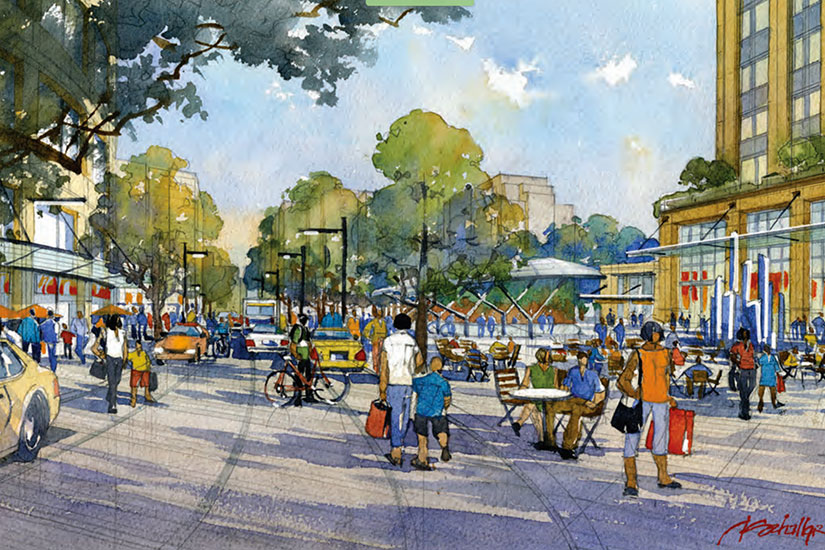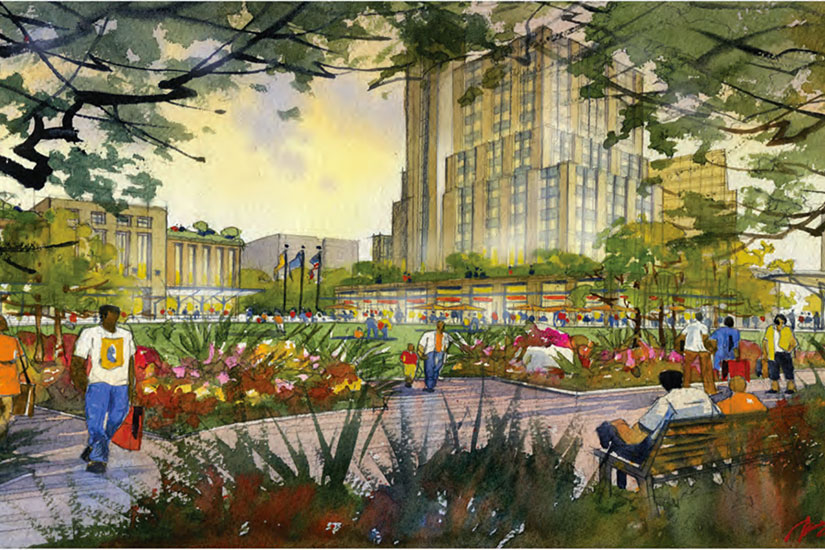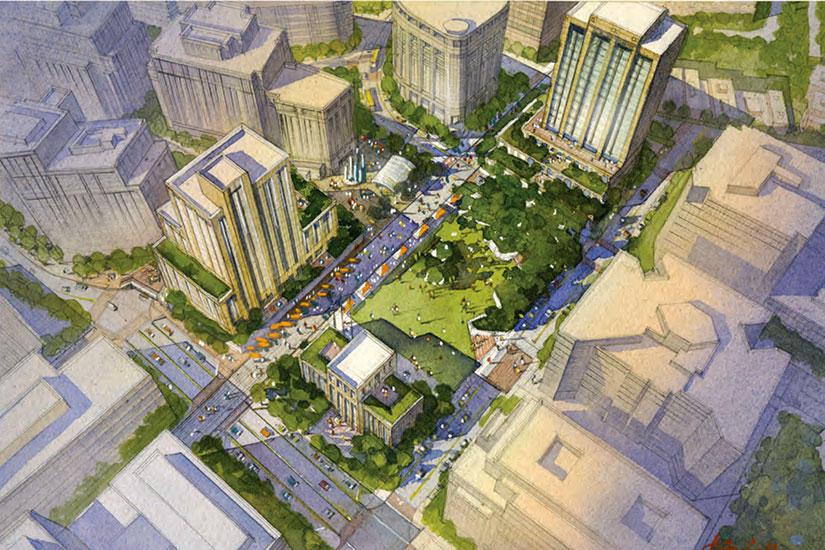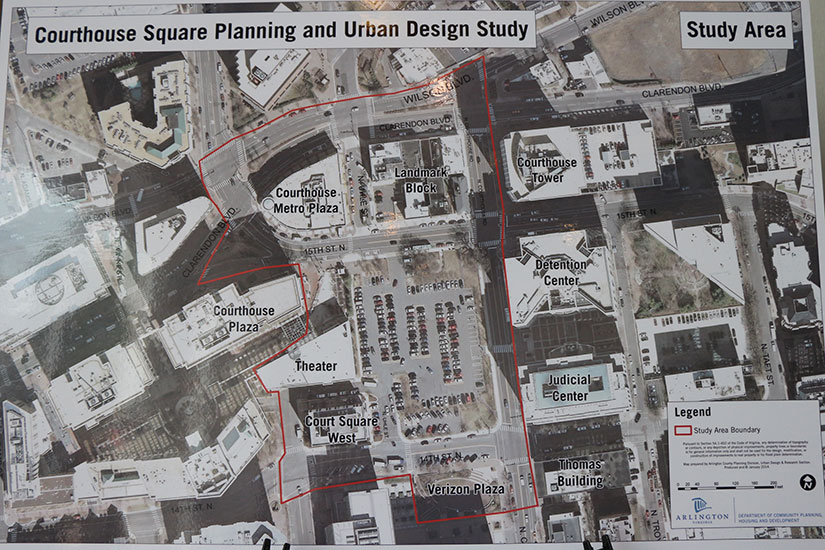A plan to significantly transform the Courthouse neighborhood by guiding new development, turning the county’s large surface parking lot into a public square and park, and improving Metro access and pedestrian facilities, has gotten the green light.
The Arlington County Board on Monday unanimously approved what it’s hailing as a “visionary” new Courthouse Sector Plan.
“This plan pulls together some of our most successful policies to create a 21st century civic heart for Arlington,” County Board Chair Mary Hynes said in a statement. “It calls for undergrounding Courthouse Square parking to create vibrant open space, improving transit connectivity by adding a new Metro entrance on the square, and improving sustainability through district energy and stormwater management.
“The new Courthouse Square will welcome all Arlingtonians to a new, transparent County administration building, but will also preserve a couple of key historic facades and explore additional cultural amenities in the future,” Hynes added.
A county press release highlighted ten “big ideas” included in the plan:
-
21st Century Civic Square – the top priority replaces an existing surface parking lot to create the new Courthouse Square, a network of open spaces that can support a wide variety of existing and future programs and events. A new parking garage, below the square, will accommodate parking needs.
-
Central Metro access – a new, centrally-located Metro access point will provide a welcoming entrance and serve as a highly visible landmark for visitors.
-
Shared streets – diverse, walkable streetscapes will surround the square and help connect open spaces to the buildings and pedestrian activities in the immediate area. 15th Street North and 14th Street North are envisioned as curbless, shared streets that are uniquely designed to extend the usefulness of the square, accommodate vehicles and transit, while providing priority to pedestrians and promoting safety.
-
Courthouse Square promenade – a key pedestrian connection, between Wilson Boulevard and 14th Street North, will be a vibrant promenade that links the square to activities, Metro, open spaces, County facilities, local businesses and surrounding neighborhoods.
-
Symbolic civic building on South Square – a focal-point building will introduce County, civic, cultural and/or market uses in this prominent location. The future facility should be devoted to highly-accessible community functions or integrated with other compatible civic and cultural activities.
-
Verizon Plaza redevelopment – the existing Verizon Plaza has seen little use in the last several years due to its design, shadows and location. The plan realizes the site as a new development opportunity that will contribute to and further the plan’s goals.
-
County administration building – a key charge for the study was to examine the future location and building massing for a County administration building. The prominent location, adjacent to the promenade and 14th Street North, is on axis with the Judicial Center and provides entrances located on the square.
-
Enhanced pedestrian connection at North Veitch Street and 14th Street North – an improved connection from the south will ease and enrich the pedestrian experience in an area with topographical and visual barriers, and pedestrian conflicts with parking and loading access points.
-
Cultural and civic facilities – cultural and civic facilities have the ability to enliven and enrich the Courthouse Square experience and create a multi-purpose regional destination. A number of locations could accommodate cultural uses ranging from a museum to a performing arts venue. Through the civic engagement process, the community shared a number of potential uses that are included in the document.
-
Sustainability – creative and responsible sustainability solutions are integrated with recommendations throughout the plan.
The sector plan also includes language that supports maintaining affordable housing in the neighborhood, which it described as a “mixed-use, mixed income, premier location.”
The community process for the plan began in 2013. While some elements of the plan could be implemented in the next few years, many of the big goals are expected to take at least five years, if not a decade or more, to bring to reality.






